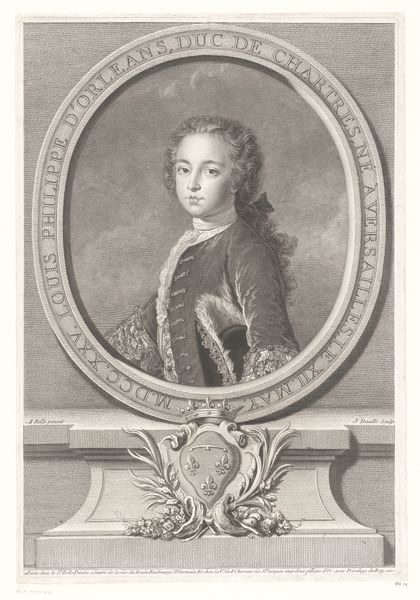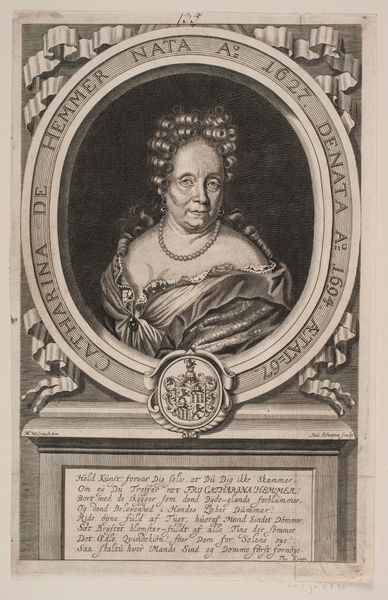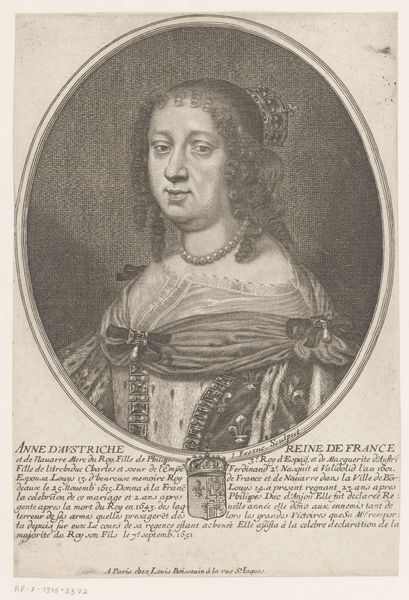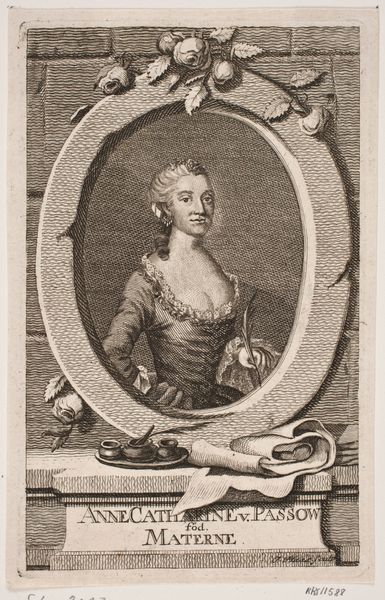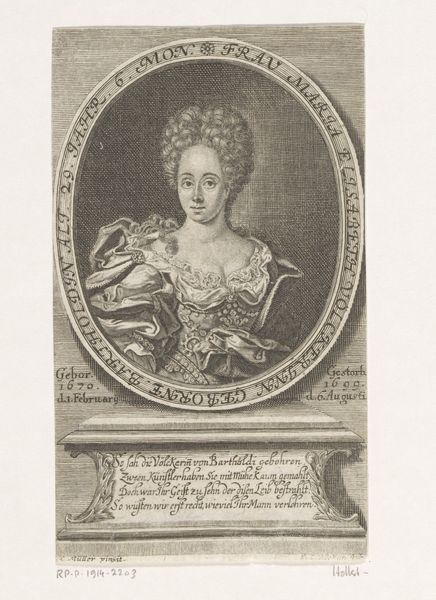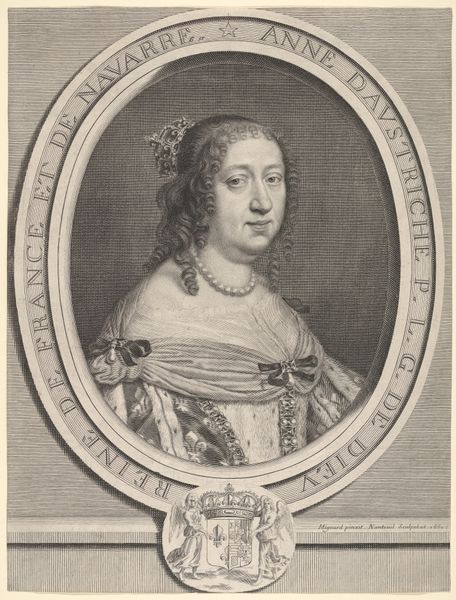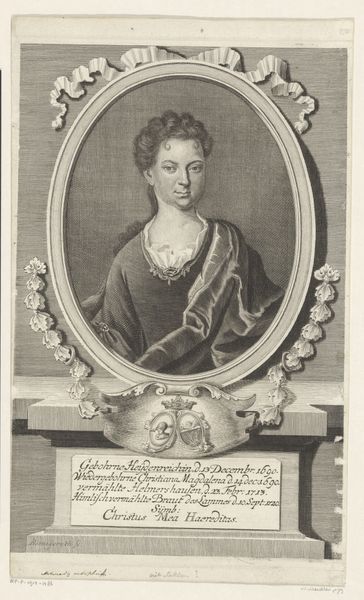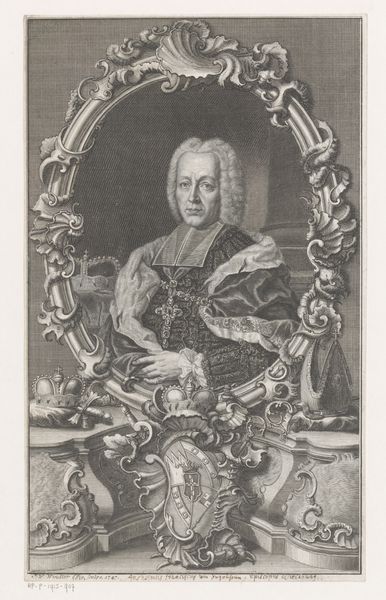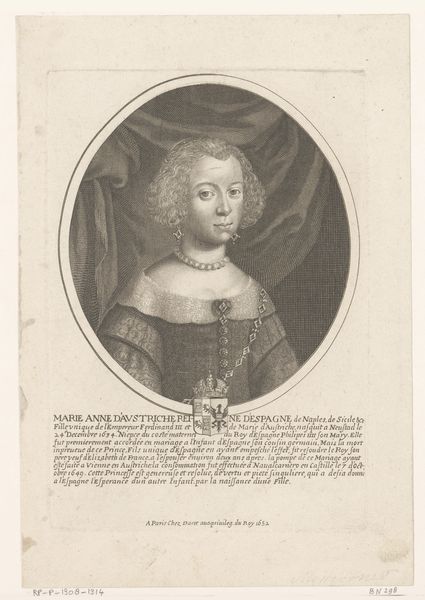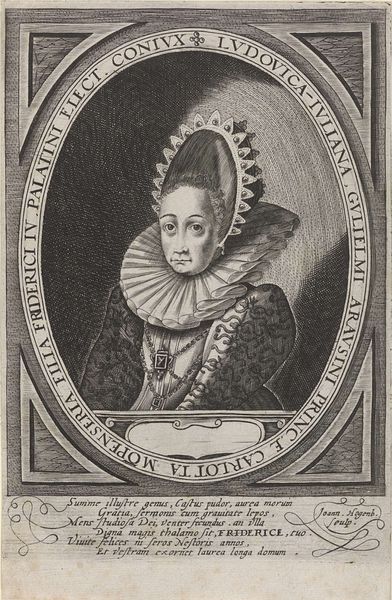
Dimensions: 255 mm (height) x 173 mm (width) (plademaal)
Curator: Here we have an engraving of "Prinsesse Charlotte Amalie," made sometime between 1747 and 1799 after Andreas Heckel. The print is part of the collection at the Statens Museum for Kunst. What's your initial impression? Editor: Well, the meticulous hatching definitely grabs my attention. It is like a web that holds and grounds her. The starkness is interesting—nothing obscures the representation of status and social fabric here. Curator: The surrounding emblems are heavy with meaning. Above the oval portrait we see a crown representing royalty, a cross atop an open book perhaps symbolizing faith and learning, and wheat suggesting prosperity and God's abundance. All classic visual tropes of power. Editor: Yes, it’s so conventional, isn't it? The sheer labor involved in producing the fine lines through the printmaking process is impressive though, underscoring that very act of representing and memorializing nobility and its attendant visual demands. Curator: Absolutely. Engraving as a technique allowed for a high degree of control, reflecting the controlled image of Charlotte Amalie herself and what her role stood for. How might her own presentation through attire further communicate aspects of her cultural importance? Editor: Her elaborate ruff and bejeweled gown certainly telegraph status and wealth. But I wonder about the message sent to other women who would look to such an image and attempt to mirror its aesthetics. Where does one source such material in that time period, and who is responsible for its design and construction? Curator: These images cemented visual languages for power. The iconography is immediately legible within its cultural context, reminding viewers of the order and divine right that defined the age. Even in print, this engraving carried significant cultural weight. Editor: But also reflects the economic structures underpinning its very creation. It’s a fascinating window into not just visual codes, but material circumstances and a stratified system of making. Curator: Indeed. Looking closer allows us to trace those layers of meaning. Editor: Absolutely. Thanks for pointing that out.
Comments
No comments
Be the first to comment and join the conversation on the ultimate creative platform.
